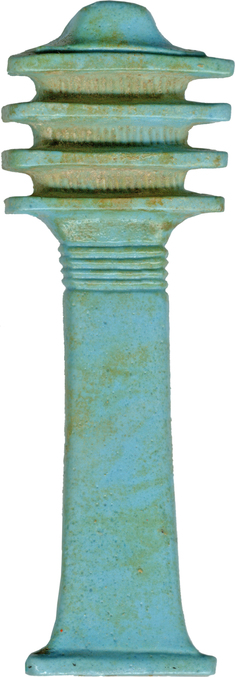Djed-Pillar
(Ancient Egypt and Nubia )
Large Djed-pillars such as this were used for the living in festival or temple contexts, but were also attached to the body of a deceased. Usually, they were used as part of an amulet set, which included more than one of these pillars. This pillar dates in the Late Period (664-332 BC), and is excellent example for the high quality of amulet production of the 26th Dynasty (664-525 BC).
Provenance
Provenance (from the French provenir, 'to come from/forth') is the chronology of the ownership, custody, or location of a historical object. Learn more about provenance at the Walters.
[Possibly excavated at Saqqara and sold at the art market in Cairo in the early 20th century]; Mr. Albert Cousins [date and mode of acquisition unknown]; Walters Art Museum, 1982, by gift.
Geographies
Egypt
(Place of Origin)
Egypt, Saqqara (Place of Discovery)
Measurements
H: 4 1/8 x W: 1 1/4 x D: 7/16 in. (10.45 x 3.1 x 1.08 cm)
Credit Line
Gift of Mr. Albert Cousins, 1982
Location in Museum
Not on view
Accession Number
In libraries, galleries, museums, and archives, an accession number is a unique identifier assigned to each object in the collection.
In libraries, galleries, museums, and archives, an accession number is a unique identifier assigned to each object in the collection.
48.2864










